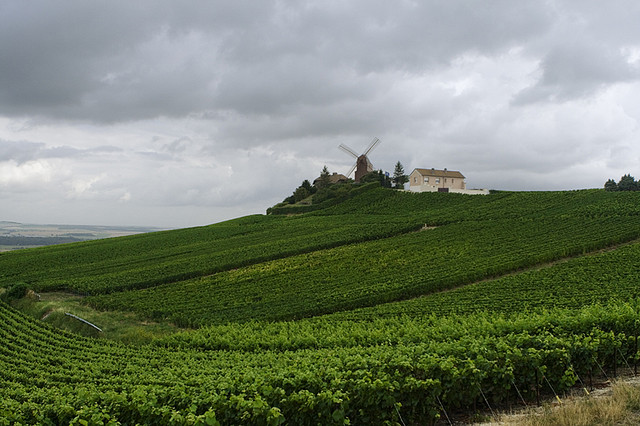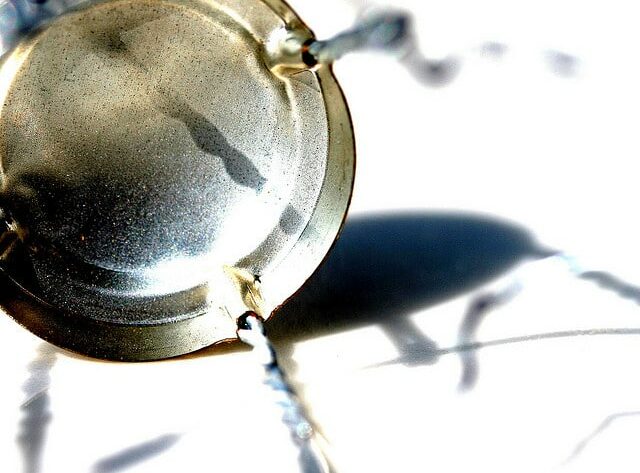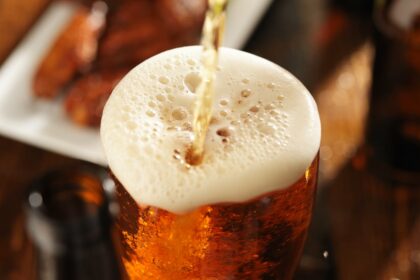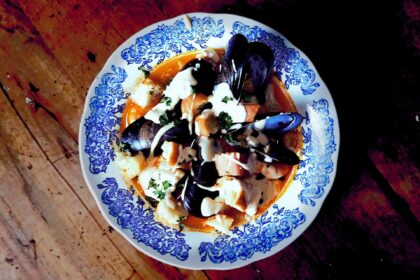
“Champagne is the only wine made in the world that will make your legs shake,” exclaimed Robert Ross Moody, Chairman of the Sommelier Society of America since 1999, excitedly.
If you’ve read my previous Sommelier Certification Series posts, you’ll know I’m currently going for my sommelier certification through The Society. The focus of today’s class is Champagne, taught by John Bandman, a wine and culinary management instructor at both the Art Institute of New York and the French Wine Society. For those who don’t have a deep understanding of wine the world of French Champagne, with its high class consumer market, extremely strict production process and one-of-kind classification, it can come off as unapproachable; however, Mr. Bandman is anything but, smiling, making jokes and ensuring the study of Champagne is more fun than intimidating (although who wouldn’t have a good time sampling seven delicious glasses of bubbly).
While unique is an overused word in the world of travel and lifestyle writing, Champagne truly deserves the compliment. Not only is the drink specific to one region in the entire world — a very specific area of less than 80,000 acres in Champagne, France — but its mix of rare chalky soils, easy drainage, cool climate, sloping hillside and requirement of being bottle aged on the lees (bits of dead and residual yeast cells) give it a high acidity — literally making your mouth water — low sugar, delicate pearls of Champagne bubbles, and often a delicious fresh baked bread essence. Moreover, brut Champagne must be aged on the lees for a minimum of 15 months, and vintage Champagne for three years, also adding to its appeal.
So how can you tell the difference between Champagne and sparkling wine? A few ways. First of all, because of the cool climate, which leads to less sweet and ripe fruits, Champagne is highly acidic. Additionally, a French Champagne won’t have foam on the sides due to the autolysis and partly the longer aging. With true Champagne you’ll also have a constant stream of bubbles trickling up the sides of the glass. Lastly, Champagne can only be made using Chardonnay, Pinot Noir and Pinot Meunier grapes, which each contribute a certain something to the wine.

The Anatomy Of Champagne
Just like in Biology Class, it can be helpful to deconstruct our subject to better understand its function, starting with the grapes. First is the Chardonnay, which gives Champagne it’s elegance, higher acidity, alcohol and light fruity notes. Then there’s the Pinot Noir — the most widely planted grape — which provides a backbone and richness. With the Pinot Meunier, you’re getting the more earthy, spicy characteristics, with the grape also providing a roundness to the drink.
While the aromas and flavors you’ll find during a Champagne tasting are subjective, there are a few that are common to Champagne, as shown in John’s very colorful diagram above (see, Champagne drinkers do know how to have fun). As someone who hates charts and graphs, I found this diagram as refreshing as the Ployez-Jacquemart Brut I was sipping. Some possible Champagne aroma and flavor traits included strawberries, raspberries, honeydew, lychee nuts, pear, lime, honey, vanilla beans, spice, nutmeg, clove, butter, cabbage, mushroom and even creams brulee if, as John mentioned, you want to “market it up.” During the tasting — which I’ll get to later — I did in fact taste creme brulee multiple times (yum!). A simple Champagne will typically have aromas and flavors like those found on the left, with more complex Champagnes exhibiting the characteristics shown on the right.

Mushroom Wine?
You may be wondering how in the world a Champagne that tastes like mushrooms could be enjoyable. Keep in mind, you won’t feel like you’re drinking stew. These are just some of the essences that will affect your overall Champagne drinking experience, either negatively or positively. While some drinkers prefer an earthier wine, others don’t. That being said, learning, tasting and understanding your preferences will lead you to make more informed choices when ordering a wine.
Hint: As I learned in the sommelier certification course, if you know what grapes are used and more predominant in a Champagne you can make an estimated guess as to what types of aromas and flavors will be present. For example, if a Champagne is predominantly Chardonnay you can expect fresh fruits, citrus and often candied ginger or fruits. If it’s mostly Pinot Noir, red fruits like strawberry and cherry — the most common flavor in red wine — are likely. And as the Pinot Meunier is more earthy, you’re more likely to get those mushroom and cabbage elements.

The Making Of Champagne
As Mr. Bandman pointed out, one truly special feature of Champagne is the way it’s made. Erase any mental images of oak barrels and racking — moving the wine from one vessel to another to get it off the lees. With Champagne, you’ll begin by hand harvesting (grapes are picked early to ensure lower alcohol levels, which is toxic to yeast), pressing, fermenting and blending the grapes before adding sugar and yeast, or “Liqueur de Tirage” as it’s formally known. From there, it’s bottled and undergoes a second fermentation — within the bottle! The wine is actually aged on the lees, which is why you’ll often find a doughy or brioche-like characteristic. During the bottle fermentation is also when carbon dioxide forms, leading to bubbles. The longer the wine spends on the lees the higher the quality, the smaller the bubbles and the more “creamy mousse” the texture.
Don’t worry, once Champagne is served the yeast and sediment are gone. The way these particles are removed is actually very interesting, as it’s through a process known as disgorging. After the wine is done with its second fermentation it will be placed in an icy brine solution, with the yeast consolidating into an ice cube. From there, the pressure within the bottle will eject the cube and — voila! — you’re left with a thoroughly enjoyable bottle of classic Champagne.

To Swirl Or Not To Swirl?
There’s always the same debate when out having a glass or Champagne or sparkling wine with friends is: to swirl or not to swirl? According to Mr. Bandman, the answer is no. While with still wines swirling helps open up the bouquet of the drink, the constant bubbles in Champagne are already bringing forth the aroma.

The Tasting
When thinking about Champagne I’d always had a set idea of what its characteristics were and what it tasted like. A yellowish white color, dry and almost without any fruit or savory aromas or flavors (what was I thinking?!). After completing a tasting under the direction of The Sommelier Society of America and Mr. Bandman, I can now say my way of thinking has completely changed. In fact, I almost feel cheated out of 27 delicious years of appreciative Champagne drinking.
Because winemakers use both red and white grapes to make Champagne, the color can vary quite a bit. In fact, one of my favorite Champagnes I tried was a salmon-colored rose called Gosset Grand Rose. Tipping the glass back to inhale the aromas, I got notes of strawberries and fresh red cherry, enhanced by further flavors of caramelized apples. This Champagne had less acidity than some of the others we’d tasted, which led to a discussion of how this showed there was most likely more Chardonnay than Pinot Noir and Pinot Meunier. This idea was corroborated with a look at the bottle, which proved 56% Chardonnay, 35% Pinot Noir and 9% Pinot Meunier.
Two Champagnes I thought were interesting to compare were the first two sampled, a Ployez-Jacquemart Brut and the Gosset Grand Blanc de Blanc (when a Champagne is a “Blanc de Blanc” it means it’s made with 100% Chardonnay grapes). The class started with the Ployez-Jacquemart Brut, a brut-style (aka very dry) Champagne with aromas of honeydew, tart gree apple and brioche that had a very high acidity. This wine had 40% Chardonnay, 55% Pinot Noir and 5% Pinot Meunier. The Gosset Grand, on the other hand, was much more complex as well as sweeter, with notes of honey, vanilla bean, sweet spices like nutmeg and clove, caramelized orange slices, candied ginger (typical of aged Chardonnay) and cooked fruit — that’s right, one should also think about whether the fruit is fresh, cooked, stewed or candied — like poached peaches. Upon first tasting, the Gosset Grand made the Ployez-Jacquemart Brut seem almost boring; however, when Mr. Bandman instructed everyone to go back after 15 minutes and try the first wine again after it had time to open up, I experienced a lot more of those dough aromas and the Champagne was rounder on the palate.
Side note: Yes, it’s okay to not drink Champagne completely chilled, especially in a tasting situation. In fact, according to Mr. Bandman drinking a Champagne at a slightly warmer temperature — not room temperature, but not completely chilled — can make it easier to pick out the different aromas and flavors. In fact, there are times that he’s found restaurant guests will ask for their Champagne to not be completely chilled.
While grapes for Champagne are typically sourced from different varietals, vineyards and vintages, Grower’s Champagne means the grapes all come from one grower’s estate, allowing for a more terroir-focused drink. We sampled a few Grower’s Champagnes, for example, the Pierre Gimonnet & Fils “Selection Belles Annees” made with 100% Chardonnay. According to Mr. Bandman, because it’s less carbonated than a traditional Champagne it’s more accessible after opening and better for food pairing. What was also interesting about this Champagne was how its aromas and flavors didn’t quite match up — proving you shouldn’t judge a wine right away until you’ve fully experienced it. While the class agreed scents of butter, vanilla bean pulp and creme brulee were very pronounced, the flavor was less so.

For a vintage tasting, we sampled a Moet & Chandon 2004 “Grand Vintage,” made with 38% Chardonnay, 33% Pinot Noir and 29% Pinot Meunier. This selection was much earthier than the rest, with notes of mushrooms — not surprising, as this wine had about four times the amount of Pinot Meunier as the previous tastings — sweet spice and candied apple, with a strong backbone thanks to the Pinot Noir.
To finish off the class, Mr. Bandman led us through a tasting of a delightful Champagne Lallier NV Zero Dosage Grand Cru made of 70% Pinot Noir and 30% Chardonnay. This wine had a high acidity, with some citrus and grapefruit mixed with lychee and fresh sliced peach. Because of the high amount of Pinot Noir the wine had a strong backbone. It’s also interesting to note the “NV” in the label, which stands for non-vintage. Each year, Champagne makers are required to set aside 20% of their wine for later years, often allowing it to lose some of the sharpness associated with young wines and open up for more intense aromas and flavors. Because blending this aged wine in later years means the grapes didn’t all come from one vintage, it’s called a non-vintage (NV) Champagne.
If we’re being completely honest, after class I immediately went to the liquor store to purchase not one, but two, bottles of French Champagne — not California “Champagne,” Spanish Cava or South African Cap Classique — but true Champagne from its namesake region. Of course, this was solely for study purposes. Well, maybe not. I do have 27 Champagne-less years to make up for, after all.
Do you love Champagne? What are your recommendations? Do you have any Champagne tasting tips to share? Please let us known in the comments below.
Jessica Festa
Latest posts by Jessica Festa (see all)
- A Culturally-Immersive Adventure In Mongolia’s Altai Mountains - Jul 8, 2023
- This Recipe Sharing Platform Supports Women In The Culinary Industry (Labneh Recipe Included!) - Nov 5, 2020
- Hiking The Mohare Danda Community Eco-Trek In Nepal - Jun 3, 2020
- 6 Important Questions For Choosing A Responsible Yoga Retreat - May 18, 2020
- How To Create & Grow A Profitable Blogging Business (Ethically) - Jan 18, 2020






Chick-fil-A has a new menu on their website. It’s really good! They have yummy sandwiches and tasty nuggets. The website is easy to use. Look at it and you’ll want Chick-fil-A all the time.
https://chickfilamenu.org/
If you are a food lover and want to satisfy your cravings, you must check Menu Price Australia, where you can find food menus in Australia and also get coupon codes for discounted delightful food.
If you are interested then visit: http://menupriceast.com/